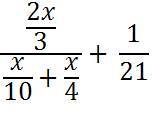Today I saw technology integration in action, twice.
Video Conference
Today I’ve been very fortunate to observe three year 6 classes in a video conference with New Zealand’s Scott Base in Antarctica.
There were plenty of questions answered by 4 people based at the camp. One of them modeled the multitude of layers and items they have to wear before they go out. We looked out the window to see the weather conditions live, and with a running commentary. It was easier to imagine somewhere where zero degrees is mild and there is no night, 24-hour daylight (the reverse is just as weird, 24-hour night in winter) when these scientists talked about these as a matter of fact – another aspect of their working lives. They constantly reminded us of what it’s like to live in a remote place with hazardous conditions….and the importance of learning to respect and live by these conditions.
I thought one of the interesting things were (1) how diplomatic they were when asked about global warming and (2) tourists into Antarctica can be a good thing. A student asked about whether or not there are signs of global warming in Antarctica. The reply was that scientists are working together to gather, collate, share and interpret scientific data. With regards to tourists, they mentioned that it is good for people passionate about the environment, and Antarctica in particular, to be able to go there.
Much was learned from this conference, made possible with HD video-conferencing facilities.
Values Exchange Program
It doesn’t end there though. Afterwards, I went to one of these year 6 classes when they started on the Values Exchange program, “a web-based debating and learning system”promoting deep and critical thinking through exploration of social concepts and personal views/values. It is free to sign-up if you want to participate. Otherwise, you can view data which represent real perspectives.
The topic of choice for the year 6 class was whether or not tourists should be banned in Antarctica. I was very impressed by students’ level of engagement in terms of thinking as well as justifying their thinking.
The online program made use of text and visuals, e.g. bar and pie graphs, to help participants along.There was a de-brief at the end; the topic proved to be controversial, i.e. almost a 50-50 split. This de-brief made it clear that everyone can have and justify opinions and, particularly with regards to questions about ethics and values, there is often no right or wrong answer.
Final words
This post has gone longer than intended. However, both activities were excellent learning opportunities in themselves and much can be said. Done together, they were even more powerful; hence, I didn’t want to separate. Anyway, neither would have been possible without technology. Rather than raise the import of technology, per se, I’d like to highlight rather what good technology integration can do to enhance learning.
